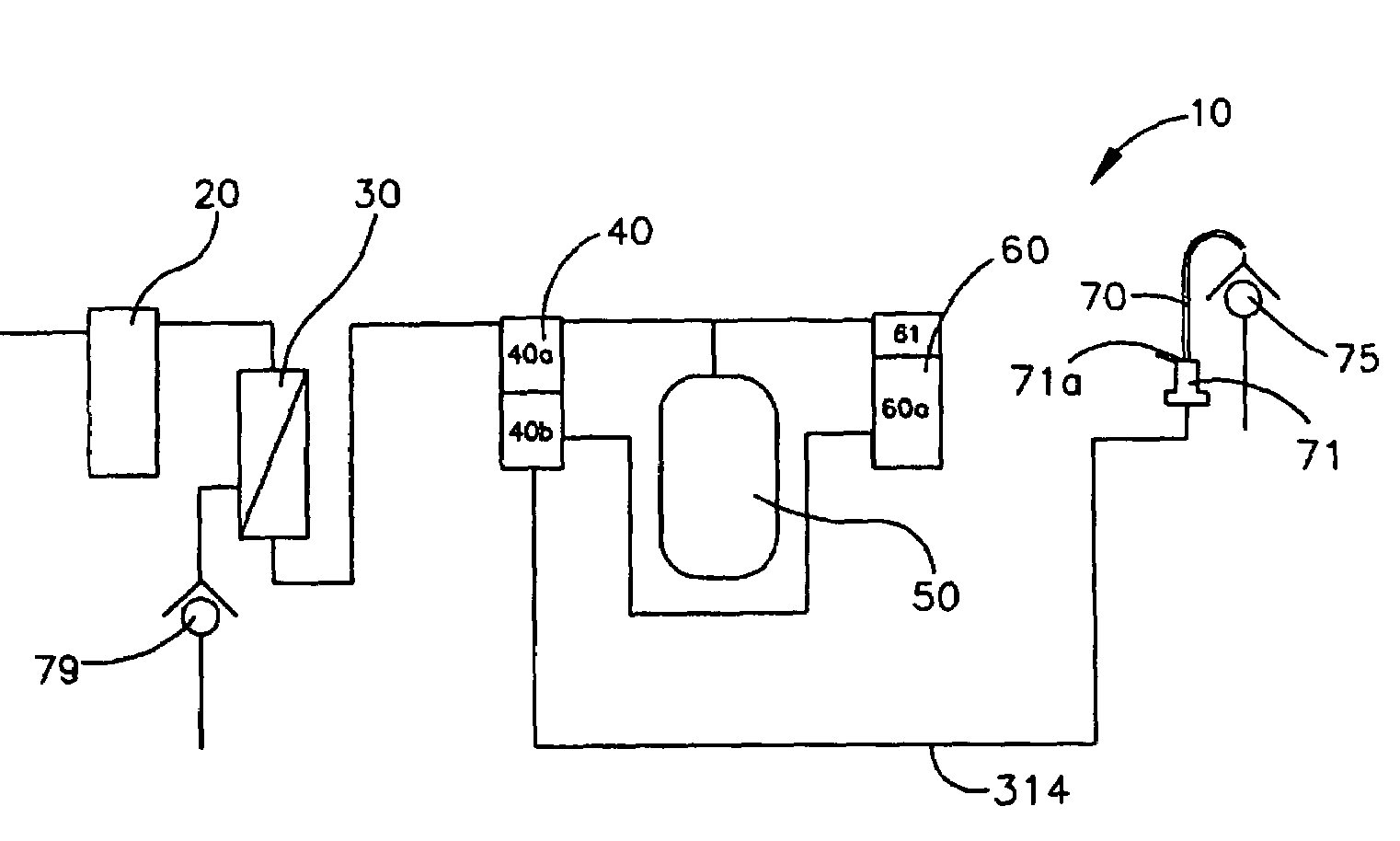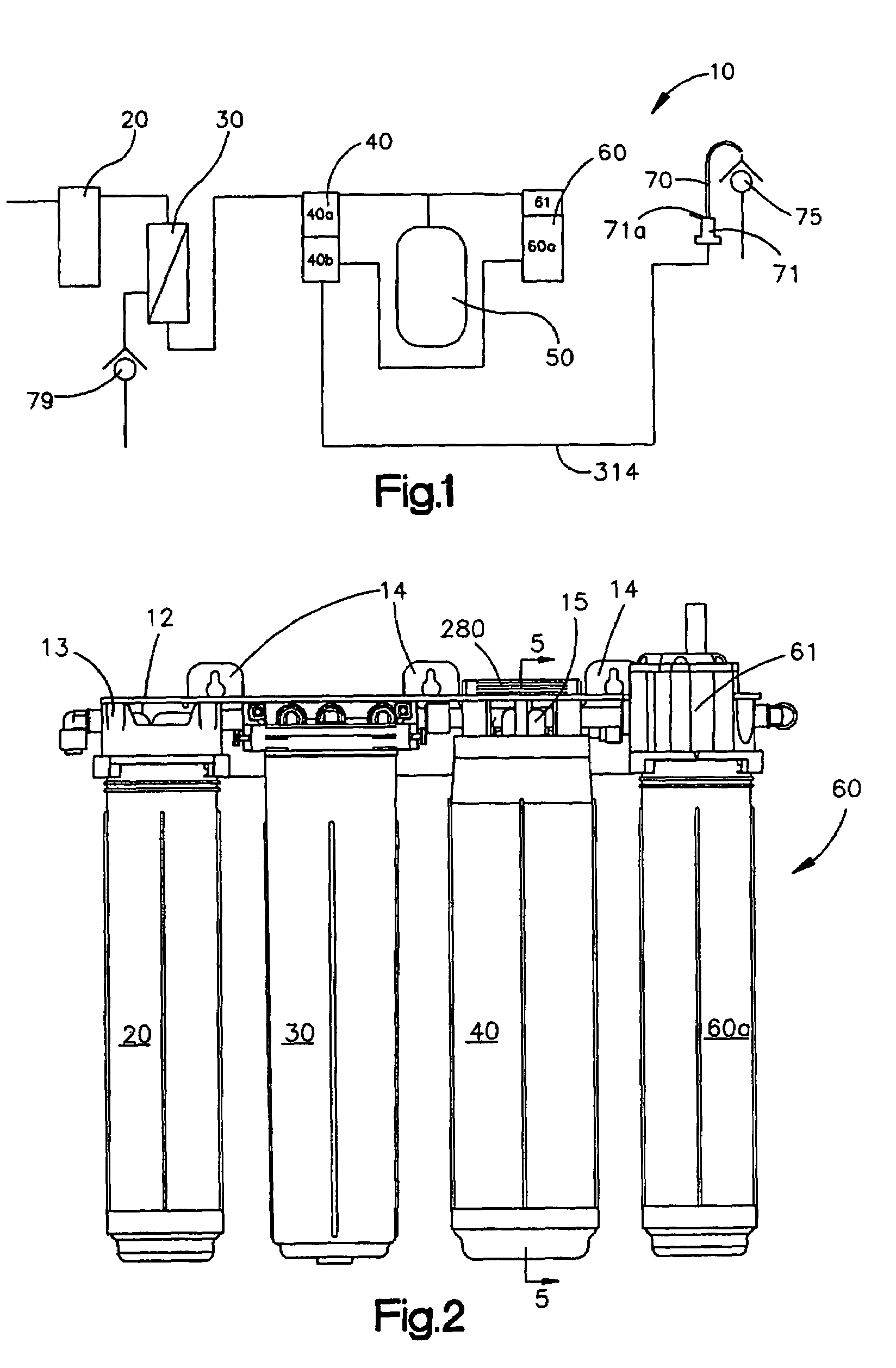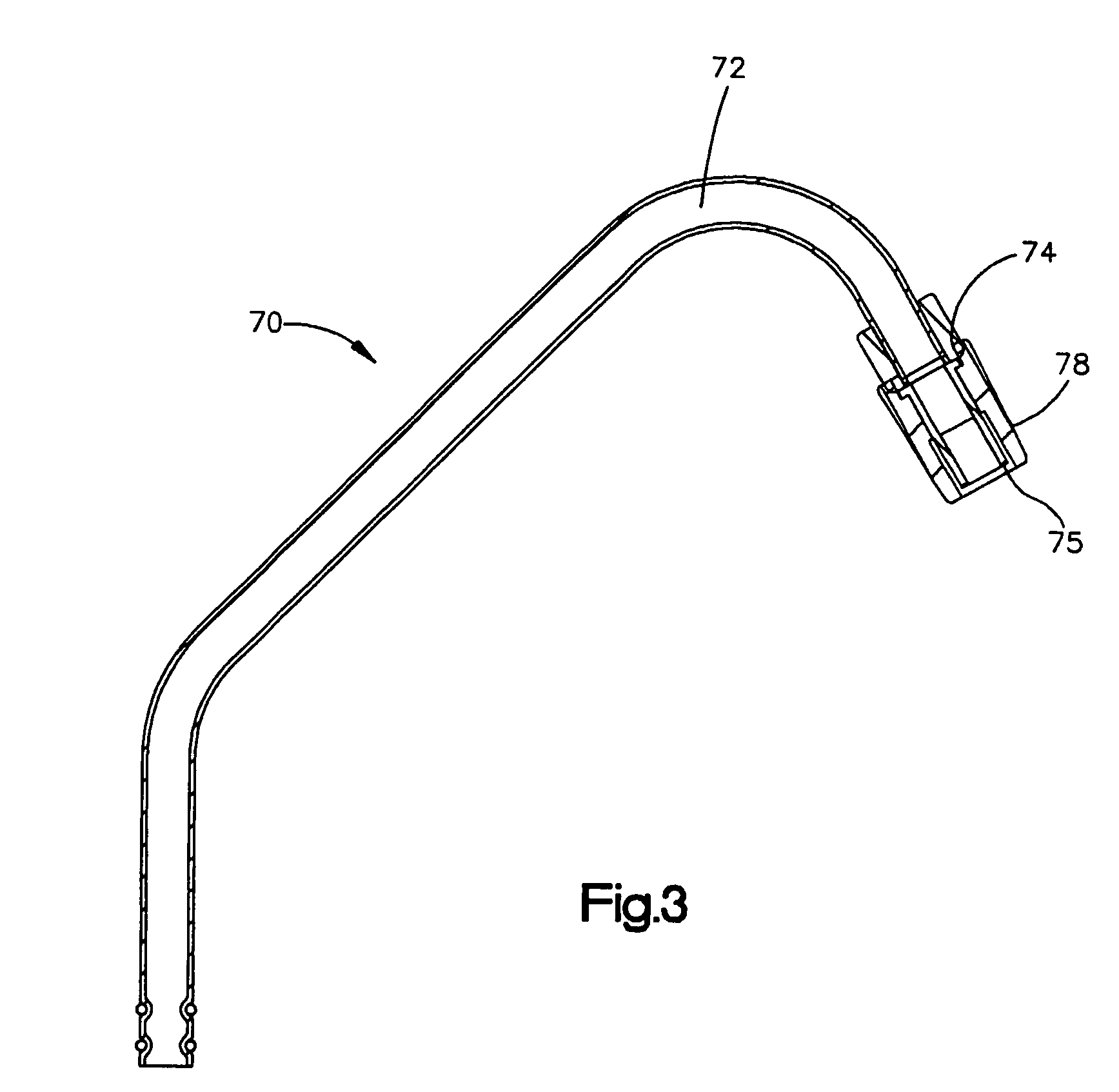Multiple barrier filter apparatus
a filter apparatus and multi-barrier technology, applied in the direction of liquid transfer devices, feed/displacement of settling tanks, packaging, etc., can solve the problems of long life of the ro membrane, harmful when ingested by people, and the inability of the ro unit alone to consistently meet the relatively stringent requirements, etc., to improve the removal of microorganisms, unwanted ionic species, and organics
- Summary
- Abstract
- Description
- Claims
- Application Information
AI Technical Summary
Benefits of technology
Problems solved by technology
Method used
Image
Examples
Embodiment Construction
[0038]FIG. 1 illustrates schematically a water treatment system 10 for removing particulate and microbial contaminants from water. The water treatment system 10 designed for mounting under the sink in a typical residential kitchen and for dispensing treated water from a system dedicated faucet 70 including a flow control valve 71 having an operating handle 71a. The system includes a pre-filter 20 such as Kinetico part number 9309 and a reverse osmosis filter 30 (such as that disclosed in U.S. Pat. No. 4,650,586, assigned to assignee of the present invention and incorporated herein by reference) placed in series to remove a majority of contaminants typically found in residential water supplies. While an RO filter is described herein, it will be apparent to one of skill in the art that any cross flow membrane filter such as a nanofiltration unit, an ultrafiltration unit, or a microfiltration unit can be used to practice the present invention. The pre-filter 20 filters out entrained so...
PUM
| Property | Measurement | Unit |
|---|---|---|
| Length | aaaaa | aaaaa |
| Length | aaaaa | aaaaa |
| Flow rate | aaaaa | aaaaa |
Abstract
Description
Claims
Application Information
 Login to View More
Login to View More - R&D
- Intellectual Property
- Life Sciences
- Materials
- Tech Scout
- Unparalleled Data Quality
- Higher Quality Content
- 60% Fewer Hallucinations
Browse by: Latest US Patents, China's latest patents, Technical Efficacy Thesaurus, Application Domain, Technology Topic, Popular Technical Reports.
© 2025 PatSnap. All rights reserved.Legal|Privacy policy|Modern Slavery Act Transparency Statement|Sitemap|About US| Contact US: help@patsnap.com



